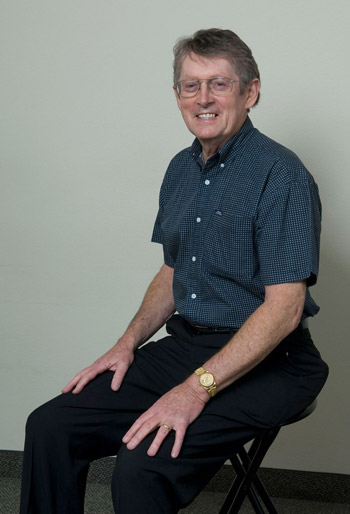
New technology and a partnership between Daisy Mountain Fire Department and John C. Lincoln Deer Valley Hospital helped save Tom Francis’ life.
Daisy Mountain answers more than 3,000 emergency calls a year and transports about 50 percent of these patients to area hospitals. Approximately one-fourth of the patients transported were brought to hospital emergency departments with some type of chest pain.
During 2009, 10 patients were saved with the assistance of the partnership between Deer Valley and Daisy Mountain, according to District Fire Marshal Phil Dyer. The system was developed to speed restoration of blood flow by cutting time required to implant cardiac stents in the hospital’s cath lab. It also works to the benefit of cardiac arrest patients who need hypothermia.
“When the heart stops beating, fresh oxygen is no longer delivered in the bloodstream to the brain and other vital organs,” explained cardiologist Tri Nguyen, MD, medical director for Non-Invasive Cardiology Services at Deer Valley. “At normal temperatures, tissue deprived of fresh blood begins to die fairly quickly.”
Hypothermia, or cooling the core body temperature to 89 - 95 degrees Fahrenheit, has been shown to help keep the brain stable and to improve neurological recovery. Because it slows metabolism and reduces the body’s demand for fresh oxygen, it gives the body a much-needed window of time to recover in a less stressful environment, Dr. Nguyen said. After evaluating Francis, hospitalist Maria Soriano, MD, was convinced that hypothermia was essential for his recovery.
“Dr. Soriano was very caring, but she was also specific,” Pat Francis said. “She told us that chances of full recovery were not guaranteed and that it would be a good idea to call family members who wanted to see Tom.”
Tom’s brother, Bob Francis, MD, an orthopedic surgeon in North Carolina, jumped on a Phoenix-bound plane and “was terrific,” Pat Francis said. “He helped me understand everything that was happening.”
As a poster child for the process, Tom Francis does remember a slow return to consciousness in the hospital’s ICU after hypothermia was successful in both protecting and preserving his brain.
“It happened in bits and pieces over several days,” he said. “I remember being full of tubes and pipes. Over the following days, they shuffled me around in a wheelchair, but eventually I was able to get up and start walking. It’s been steady improvement ever since.”
“The doctors, the nurses, the staff were all so pleasant,” Pat Francis said. “We were so happy with the care Tom got.”
Now, to the amazement of the firefighters who first resuscitated him and the medical personnel at the hospital who provided the rest of his care, Tom is back to full strength mentally and only a few rehabilitative steps away from bike riding in the desert.
“I’m ready,” he said.
Visit JCL.com/heart for more information about our cardiac services and programs.
